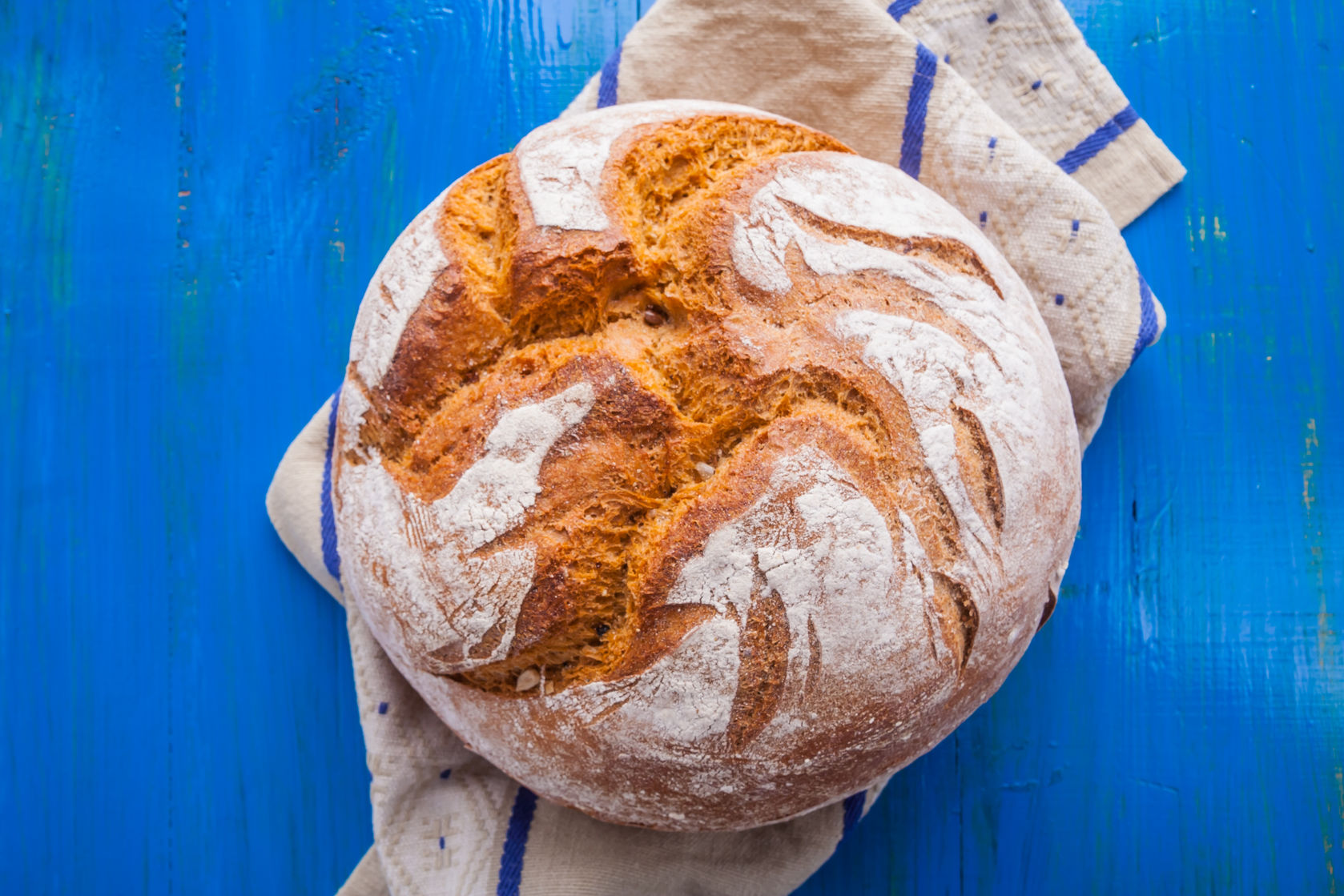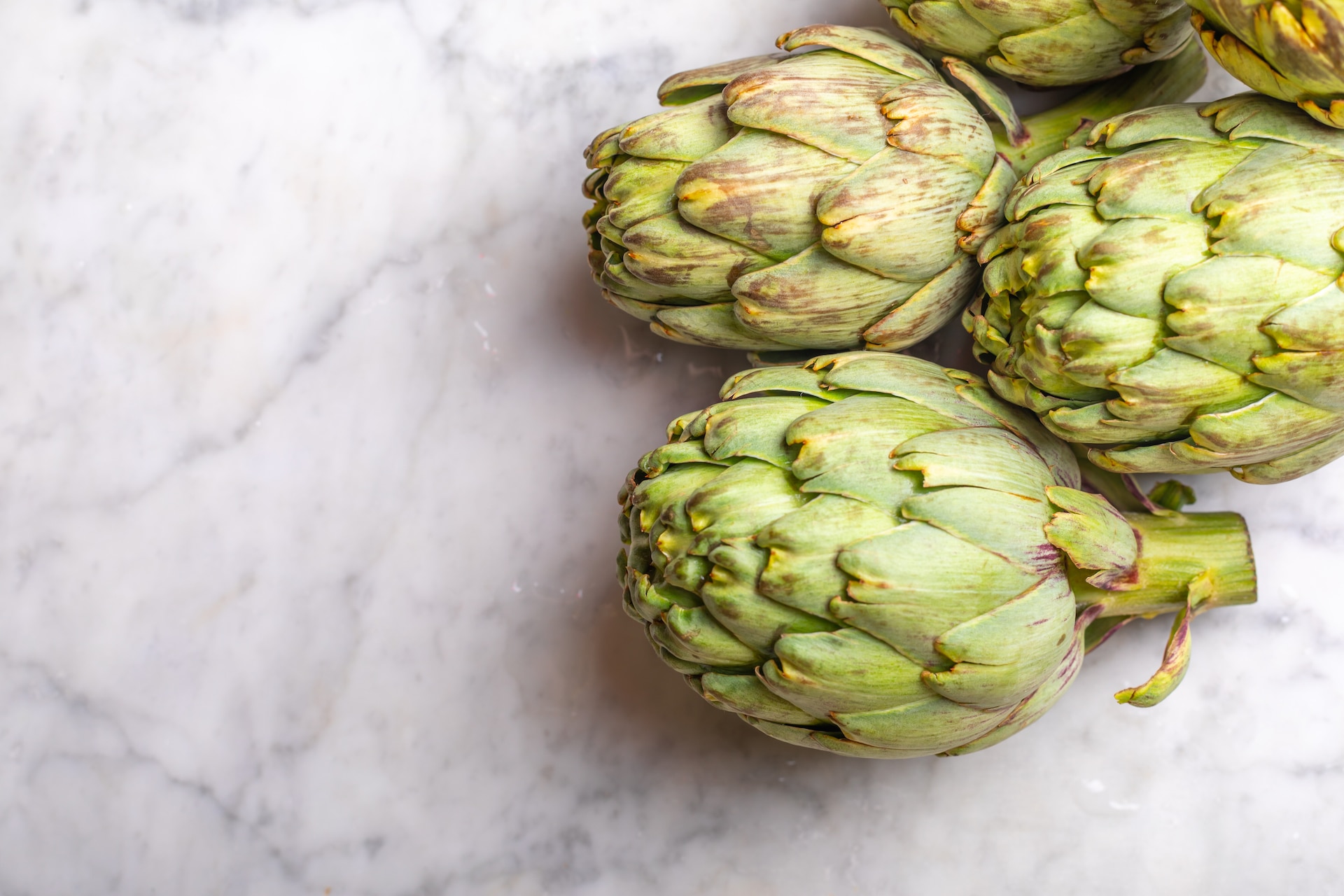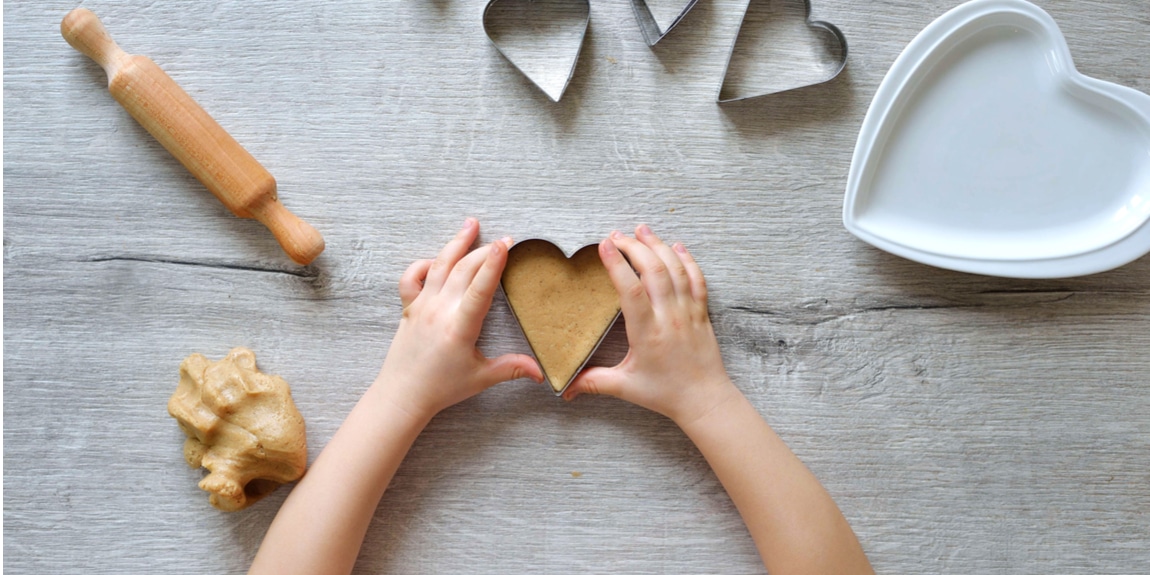Home » Eat Empowered » 20 Healthy, Non-Perishable Foods You Need In Your Kitchen Right Now
While fresh food is essential (looking at you, fruits and veggies), shelf-stable items are a critical component of well-planned kitchens. Not only does a stocked pantry set you up for success in case your meeting ran long but the kids want dinner stat, but it also makes day-to-day, quick, healthy meals even easier to pull off.
Non-perishable foods are those that last a long time without requiring refrigeration. Basically, they’re anything you might find in your pantry versus your refrigerator. But not all shelf-stable eats are created equal. After all, canned beans aren’t exactly the same as Doritos.
Here are 20 healthy, non-perishable foods that will help you keep your cupboard well-stocked for, well, a while (or for at least as long as it takes to rewatch the entire series of “The Sopranos”)!
1. Canned Beans*
Unlike fresh animal proteins that should be cooked within three to five days of purchase, canned beans can last up to five years in the pantry, (yes, you read that correctly. You can get a college degree before the beans go bad!) per the U.S. Department of Agriculture (USDA). Also nice: Just one cup of black beans can provide 15 grams of protein.
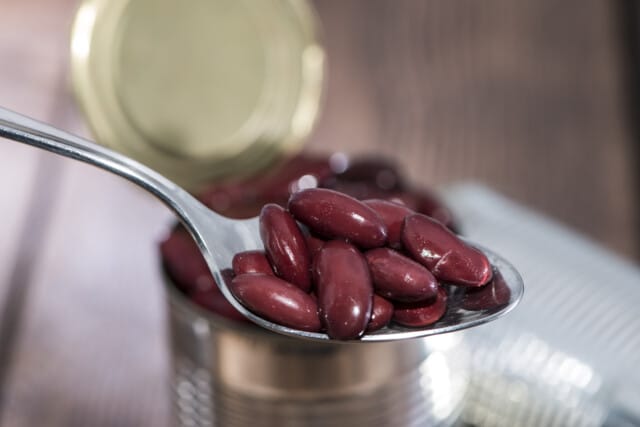
2. Farro
Whole grains such as farro last a solid six months in the pantry, according to the Whole Grains Council. We love the chewy texture of the high-quality carb. Don’t miss our favorite farro salad recipes.
3. Canned Salmon*
Can we talk about the fact that canned salmon can last up to five years(!) in the cupboard? Stock up on this stellar source of anti-inflammatory omega-3s and vitamin D for a no-cook protein that might just make it in your cupboard for longer than it takes your newborn to start kindergarten.

4. Canned Tomatoes*
Acidic foods like canned tomatoes retain their peak quality for about 18 months, per the USDA. But as long as the cans aren’t dented or rusty and are kept in a cool, dry place, they’ll pretty much last forever.
Friendly reminder: Tomatoes are a great source of antioxidants such as lycopene, along with vitamin C and potassium.
5. Chia Seeds
Unopened chia seeds can last about two years in the pantry. The superfood seeds are one of the only sources of the plant-based omega-3 fatty acid ALA (alpha-linolenic acid) You’ll also get an impressive 5 grams of gut-friendly fiber from just 1 tablespoon of chia seeds.
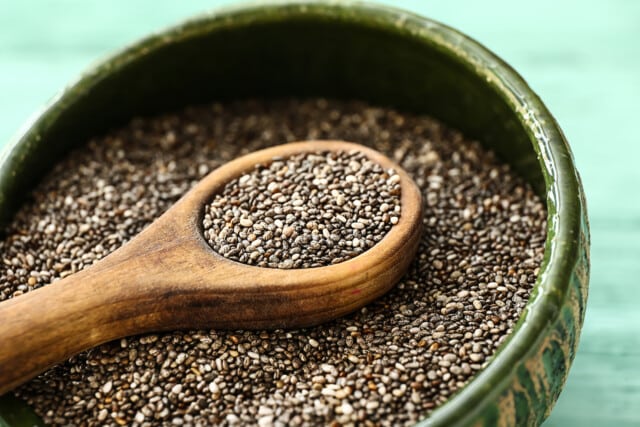
6. Nut Butters
A pantry must, nut butters are packed with plant protein and heart-healthy fats that help hike up our good HDL cholesterol.
An unopened jar of peanut butter can last about nine months in the cupboard. Once opened, the National Peanut Board recommends finishing the jar within three months if you’re keeping it in the pantry. If you store the opened jar in the fridge, it’ll keep for up to nine months.
But if you’re anything like us, it’s never taken you three months to finish a jar of PB …
Pro tip: Choose natural nut butters that are made from just one (peanuts) or two (peanuts and salt) ingredients. While conventional options such as Skippy last longer, natural nut butters skip the sketchy ingredients like unhealthy oils and added sugar.
7. Shelf-Stable Milks
Shelf-stable milks are aseptically packaged, which allows them to last anywhere from six months to a year if unopened and stored in a cool, dry place.
Nut milks, such as boxed almond milk, are great options for those who don’t tolerate dairy. If you’re looking for one with a nutritional profile that’s similar to cow’s milk, look for brands that fortify their products with nutrients like vitamin D and calcium.

8. Chickpea Pasta
In case you missed it, we’re all about healthy pastas. Luckily, alternatives like chickpea pasta are safe in the pantry for about two years. The legume-based noodles are also a great way to sneak in extra fiber and plant protein on pasta night.
9. Oats
We’re all about oats. The whole grains can last up to two years at room temp. Add oats to baked goods or smoothies for energizing carbs that deliver fiber, magnesium and zinc, or whip up one of our favorite oatmeal recipes that will upgrade your a.m. in minutes.
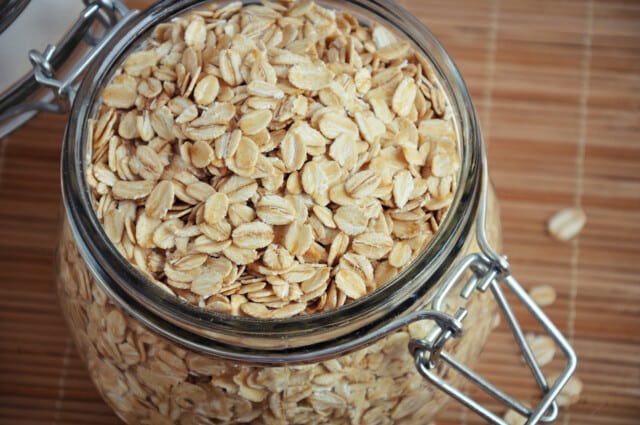
10. Bone Broth
While bone broth can be bought fresh or frozen, many brands offer boxed products that can last up to two years in your pantry. It’s the perfect protein-rich base for a cozy soup or stew. One cup of bone broth can deliver around 10 grams of protein for just 45 calories.
11. Olive Oil
Unlike fine wine, olive oil doesn’t get better with age, but its shelf life isn’t too shabby. Some sources say olive oil can last nearly two years as long as it’s stored in a spot that’s cool, dry and dark. The USDA is a bit less lenient: the organization says olive oil keeps for about four months in the pantry.

12. Breakfast Cereals
Breakfast cereals can be stored at room temp for six to 12 months before they start to taste stale, according to the USDA. Opt for products that provide at least five grams of fiber and less than five grams of added sugar per serving for a blood sugar-friendly breakfast.
13. Jerky
Need a long-lasting snack? Store-bought jerky is packed with protein and lasts about a year in your pantry. Stock up now so you’re set for your next hiking trip!
The bottom line? Don’t save that fancy EVOO you got as a gift. Use it! Your heart will thank you.
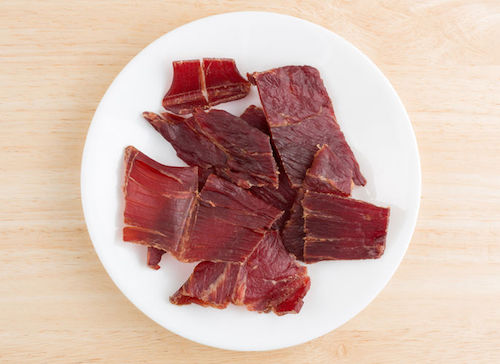
14. Canned Soup*
Choose canned soups for a quick, midday meal when your workload is off the charts. Keeping a few cans of low-sodium soup in the cupboard can cover you for some time, since canned soups will last anywhere from two to five years in the pantry.
Pro tip: Here’s how to stock your pantry like a nutritionist.
15. Freeze-Dried Fruit
FYI: Bacteria love moisture. That’s why freeze-dried products are ultra shelf-stable, since the drying process turns water-packed produce into a crispy, chip-like consistency. In other words, moisture is no more.
Add freeze-dried fruits such as blueberries, strawberries or raspberries to your cart the next time you’re at the store. The naturally sweet snack is the crunchy topper your yogurt bowl needs.
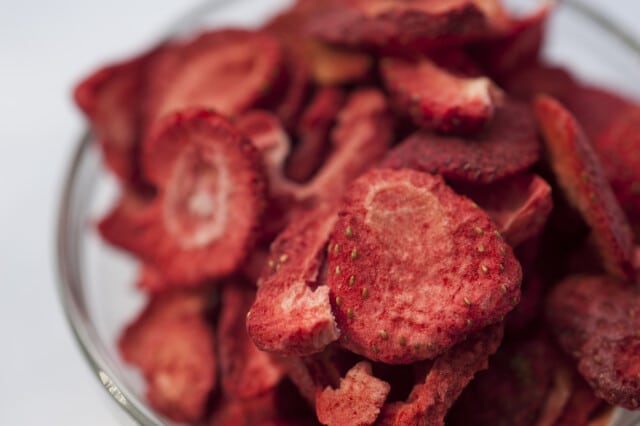
16. Canned Vegetables*
Low-acid canned veggies such as corn, green beans and mushrooms can last up to five years on the shelf. Keep a few different types in the cupboard for nights when the fridge or freezer are lacking produce.
17. Crackers
We love a good carrots-and-hummus moment, but sometimes fresh veggies aren’t in the cards. Luckily, crackers are a great non-perishable stand-in for crudite. Plus, they can last up to nine months in the pantry.
Buy crackers made from nutrient-dense ingredients, such as flax and sunflower seeds, for some extra fiber at snack time. P.S. Don’t miss these delicious ways to add more seeds to your diet.
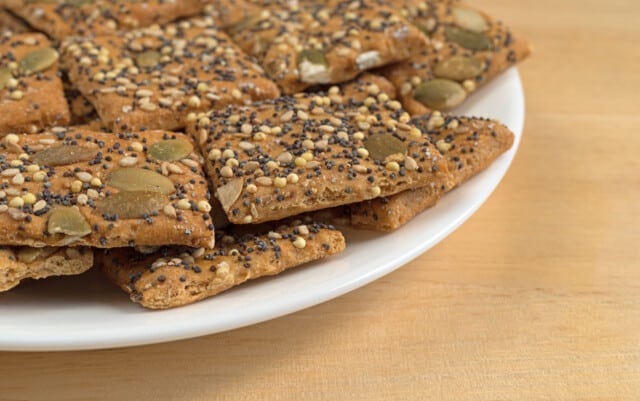
18. Pickles
Properly stored pickles can be kept unopened in the pantry for about two years. Keep a jar on hand for when salt cravings kick in.
19. Spices
No pantry is complete without antioxidant-rich spices such as cinnamon, turmeric and cayenne pepper. But beware: Dried spices lose their potency over time. Keep spices in the cupboard for no more than two to three years to ensure optimal flavor.
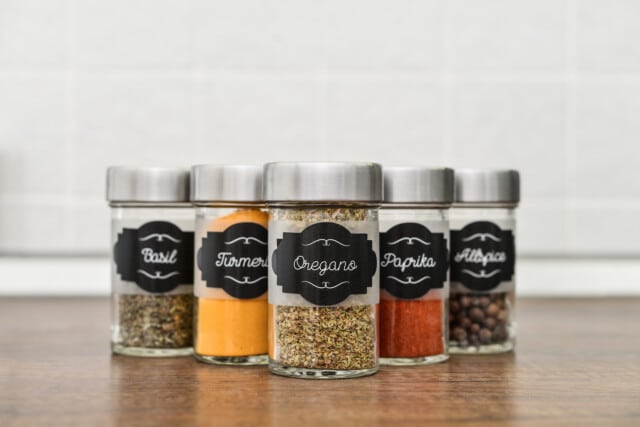
20. Honey
For the best texture and quality, you may want to consume your honey in about a year. Though the sweet stuff can crystallize over time, it’s still safe to eat for years, per the USDA. Try our Peanut Butter Honey Energy Balls for a nourishing afternoon pick-me-up.
*BPA and Canned Food
About those cans: For decades, canned foods have been lined with an epoxy resin based on bisphenol A, better known as the bad boy BPA, which is a major hormone disruptor, among other things. (You can read more about the dangers of BPA here.)
Today, about 95% of canned foods are made without BPA-based linings, according to the Can Manufacturers Institute, though there are still concerns such as lack of transparency from food manufacturers regarding the chemicals they’ve substituted for BPA.
If you’re concerned about BPA, we suggest avoiding canned foods until there’s more transparency from food manufacturers, or at least look for cans that are labeled BPA-free, though that may not be a big assurance as those substitutes aren’t always better.
(Images: Shutterstock)
Anthea Levi, MS, RD, is a Brooklyn-based registered dietitian and health reporter. She currently works in private practice at Culina Health and contributes to various media outlets, including Livestrong.com and Nutritious Life.
RECENT ARTICLES

Want a sneak peek inside the program?
Get FREE access to some of the core training materials that make up our signature program – Become a Nutrition Coach.
Get Access"*" indicates required fields
 Eat Empowered
Eat Empowered

